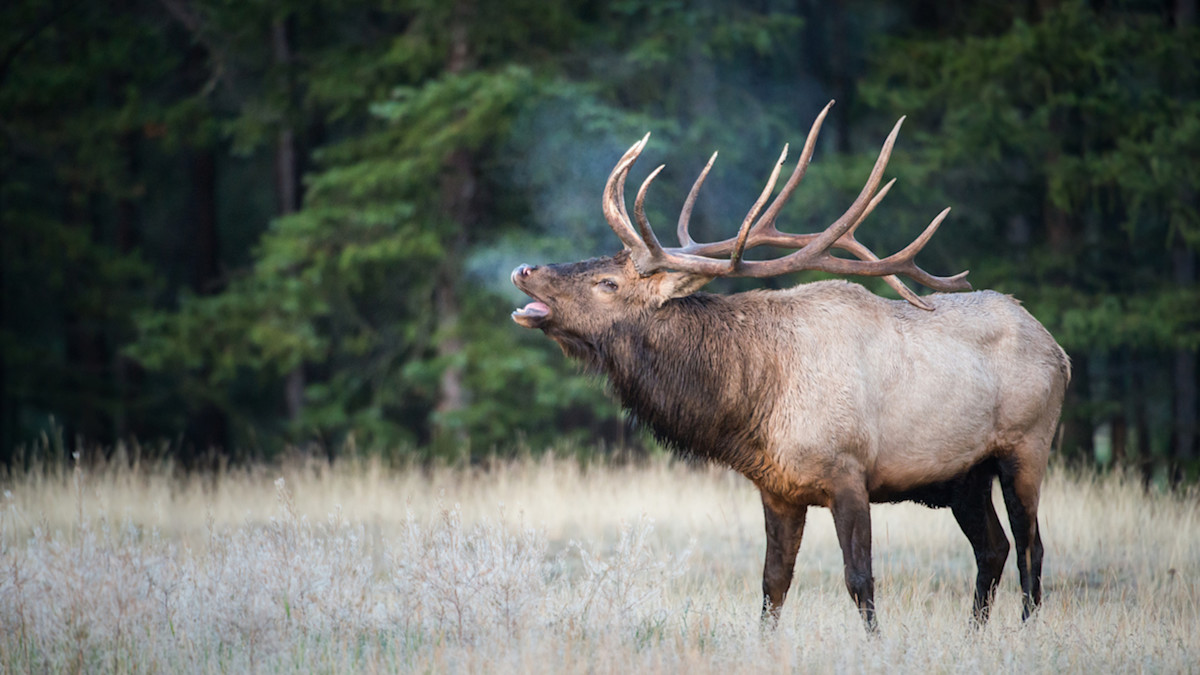
Blue whales have them. Songbirds have them. Turns out bugling bull elk have them too. Not just a song of their species, but local dialects that separates their tunes from others in geographic locations.
In a discovery that may stir the coals of campfire debates for many Septembers to come, scientists have documented that bull elk bugle in different dialects depending on where they live.
We know that hunters speak in different accents. (Just listen to how Mark Kenyon pronounces “acorn” compared to Clay Newcomb.) But scientists have now determined that bull elk also bugle with different “accents.”
The study was completed by researchers Tracee Nelson-Reinier of the University of Northern Colorado and Jennifer Clarke of the University of La Verne and was published recently in the Journal of Mammalogy.
Dialects are regional differences in animal vocalizations within a species. Yellow warblers singing in Virginia may sound noticeably different from identical specimens singing in California. Blue whales in one ocean sound distinct from members of the same species on the other end of the globe. But this study marks the first documentation of dialects in hoofed mammals.
Nelson-Reinier and Clarke compared the fall breeding calls bull elk in three locations: Yellowstone National Park in Wyoming, Rocky Mountain National Park in Colorado, and Elk County, Pennsylvania. All those elk are somewhat genetically similar. Native elk were wiped out from most of Colorado and all of Pennsylvania, so these modern herds are the result of transplanting breeding stock from Yellowstone.
The biologists recorded samples of nearly 400 bugles from 43 different bulls in those different places and fed those sounds through a computer. The computer broke each bugle into a sequence of three sounds—the on-glide, the whistle, and the off-glide. (It didn’t analyze the grunts, coughs, chuckles, and squeals that sometimes accompany the classic three-step bugle).
The computer analyzed ten variables of each bugle such as the duration and frequency of the entire call or components of the call such as rising and falling notes. “Nine of ten variables showed statistically significant differences between populations.” In other words, bull elk announced their biological urges differently, depending on where they lived.
“We found North American elk in three widely disjunct populations exhibit distinct dialect differences in the male bugle call,” they wrote. The biologists believe part of these distinctions may be genetic. However, it’s also likely that elk calves may learn the sounds of older bulls bugling while they are young, and simply mimic what they hear growing up.
Elk bugles serve many potential purposes during breeding season. A strong, robust bugle may tell female elk of a prime breeding partner, while telling competing bulls to keep their distance. A bull with a louder call may send these messages longer distances.
Jason Phelps, founder of Phelps Game Calls, called the finding fascinating. Customers around the country have asked him about how elk might sound different in different places. Traditionally, his advice is to not worry about it.
Phelps, who grew up hunting in Oregon, has enjoyed great success calling elk in his home state, as well as Montana and New Mexico. His experience tells him that human elk calls are close enough to fool rutting bulls where ever they are.
Still, Phelps is left wondering. In the Pacific Northwest, for example, there are two populations of elk on either side of the Cascade Range, the Roosevelt subspecies on the west and the Rocky Mountain subspecies on the east. These elk look different to the human eye—might they sound different as well?
Listen closely—maybe you’ll find out.






Conversation